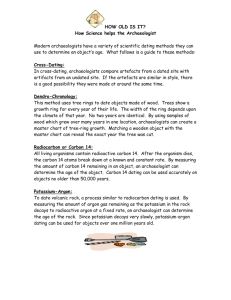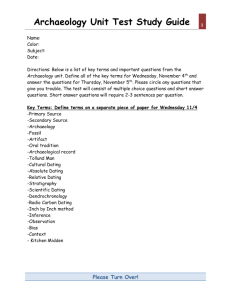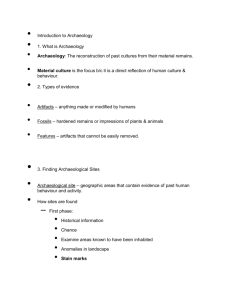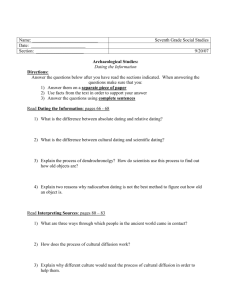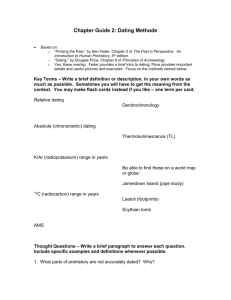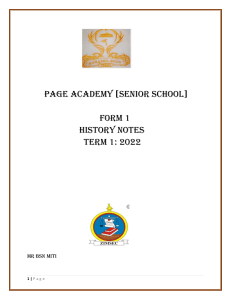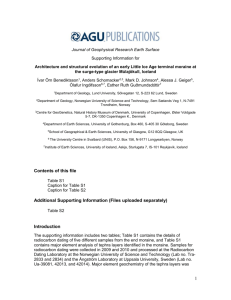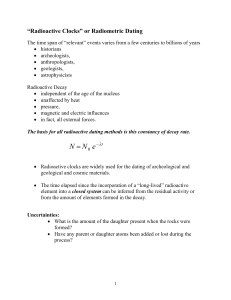Study questions for October 3-12
advertisement
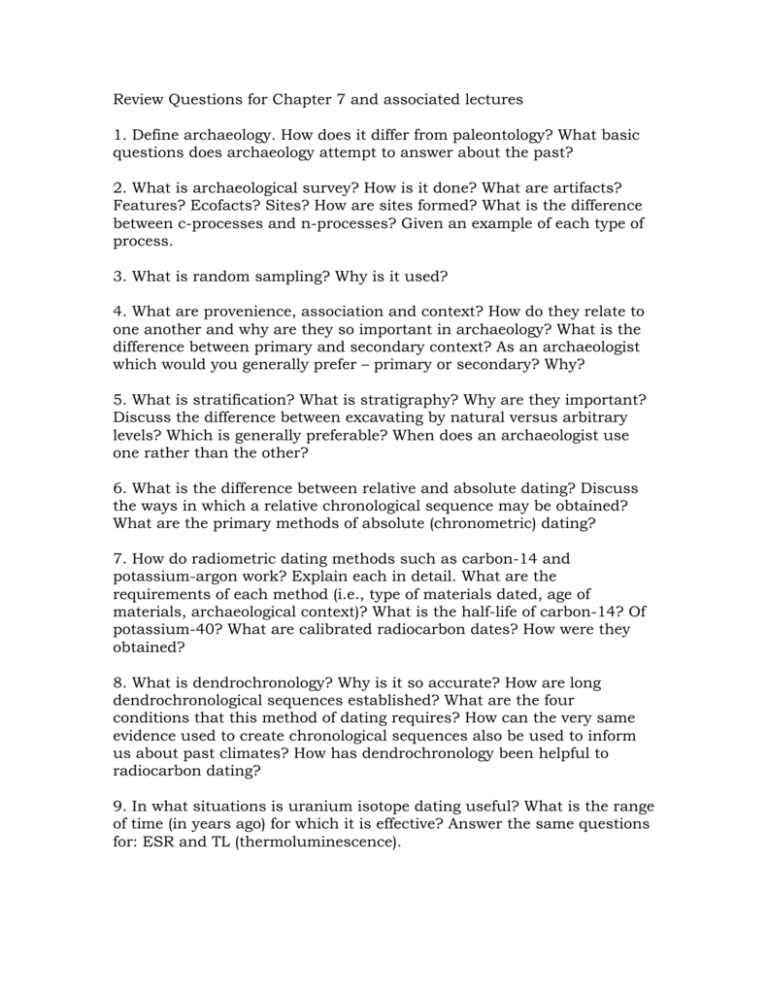
Review Questions for Chapter 7 and associated lectures 1. Define archaeology. How does it differ from paleontology? What basic questions does archaeology attempt to answer about the past? 2. What is archaeological survey? How is it done? What are artifacts? Features? Ecofacts? Sites? How are sites formed? What is the difference between c-processes and n-processes? Given an example of each type of process. 3. What is random sampling? Why is it used? 4. What are provenience, association and context? How do they relate to one another and why are they so important in archaeology? What is the difference between primary and secondary context? As an archaeologist which would you generally prefer – primary or secondary? Why? 5. What is stratification? What is stratigraphy? Why are they important? Discuss the difference between excavating by natural versus arbitrary levels? Which is generally preferable? When does an archaeologist use one rather than the other? 6. What is the difference between relative and absolute dating? Discuss the ways in which a relative chronological sequence may be obtained? What are the primary methods of absolute (chronometric) dating? 7. How do radiometric dating methods such as carbon-14 and potassium-argon work? Explain each in detail. What are the requirements of each method (i.e., type of materials dated, age of materials, archaeological context)? What is the half-life of carbon-14? Of potassium-40? What are calibrated radiocarbon dates? How were they obtained? 8. What is dendrochronology? Why is it so accurate? How are long dendrochronological sequences established? What are the four conditions that this method of dating requires? How can the very same evidence used to create chronological sequences also be used to inform us about past climates? How has dendrochronology been helpful to radiocarbon dating? 9. In what situations is uranium isotope dating useful? What is the range of time (in years ago) for which it is effective? Answer the same questions for: ESR and TL (thermoluminescence). 10. What is ethnoarchaeology and what does it contribute to our knowledge of the past? What is experimental archaeology and what does it contribute to our knowledge of the past? 11. What is palynology? What is it used for? What is the oxygen16/oxygen-18 ratio and what is it used for? 12. What do we learn from carbon-12/carbon-13 ratios? 13. Why would anyone get excited over finding hominid paleofeces (coprolites)? Would you? (In this course the answer to the second question is “yes!”) 14. How might designs on pottery help an archaeologist determine that a prehistoric society was most likely matrilocal rather than patrilocal? What would the primary assumption be here? 15. You have discovered some stone tools made of a type of flint not native to the area in which they were apparently used. There are several sources of flint in the larger region. You decide to have petrographic and trace element analyses performed. Why? 16. You find an ancient hominid site that contains bones of gazelle. You examine the bones carefully and discover a number of fairly deep scratches on some of them. What sort of evidence from the bones themselves might help you to determine how and when the hominids got the gazelle? 17. Harris lines are discovered by x-ray analysis of ancient human bones. What does this tell you? 18. You’ve discovered a human skeleton in a site and examine its pelvis. The greater sciatic notch is quite wide and the subpubic angle is relatively large. What do these bits of information tell you? You continue your examination of the skeleton and notice that none of the epiphyses had fused at the time of death. What does this tell you? 19. Why might an archaeologist use flotation on deposits obtained from a midden? Sample exam questions: 1. The half-life of 14C is about: a. 5700 years b. 50000 years c. 100,000 years d. 1,000,000 years 2. Analysis of the ratio of the oxygen isotopes 16O and 18O in seawater is useful in: a. dating submerged sites b. correcting skewed radiocarbon dates derived from the remains of marine mammals c. assessing the degree of human exploitation of marine resources d. charting worldwide climatic variation through time 3. Seriation dating relies on change in which type of artifact attribute? a. stylistic b. technological c. functional d. isotopic 4. If we classify drink containers brought into 102 Lanigan by students according to whether they’re made of plastic, glass, or some other material, we have classified on the basis of what type of attribute? a. stylistic b. functional c. technological d. form 5. Tooth eruption and epiphyseal union are both useful sources of determining the age of death of: a. females b. people over 60 c. people over 40 d. people under 20 6. Analysis shows that the ratio of 12C to 14C (12C/14C) in a charcoal specimen is nearly two times that of a fresh piece of wood. Approximately how old, in uncalibrated radiocarbon years is the specimen? a. 2800 b. 5600 c. 11,500 d. 23,000 7. A stone knife is found next to the remains of a butchered deer. We would say that the knife is in a. primary context b. secondary context c. transposed context d. disturbed context 8. Processual archaeology is especially concerned with a. establishing the what, where and when of the past b. establishing the how and why of the past c. establishing the original meaning of artifacts and features to their makers d. sites that predate the use of tools by hominids

